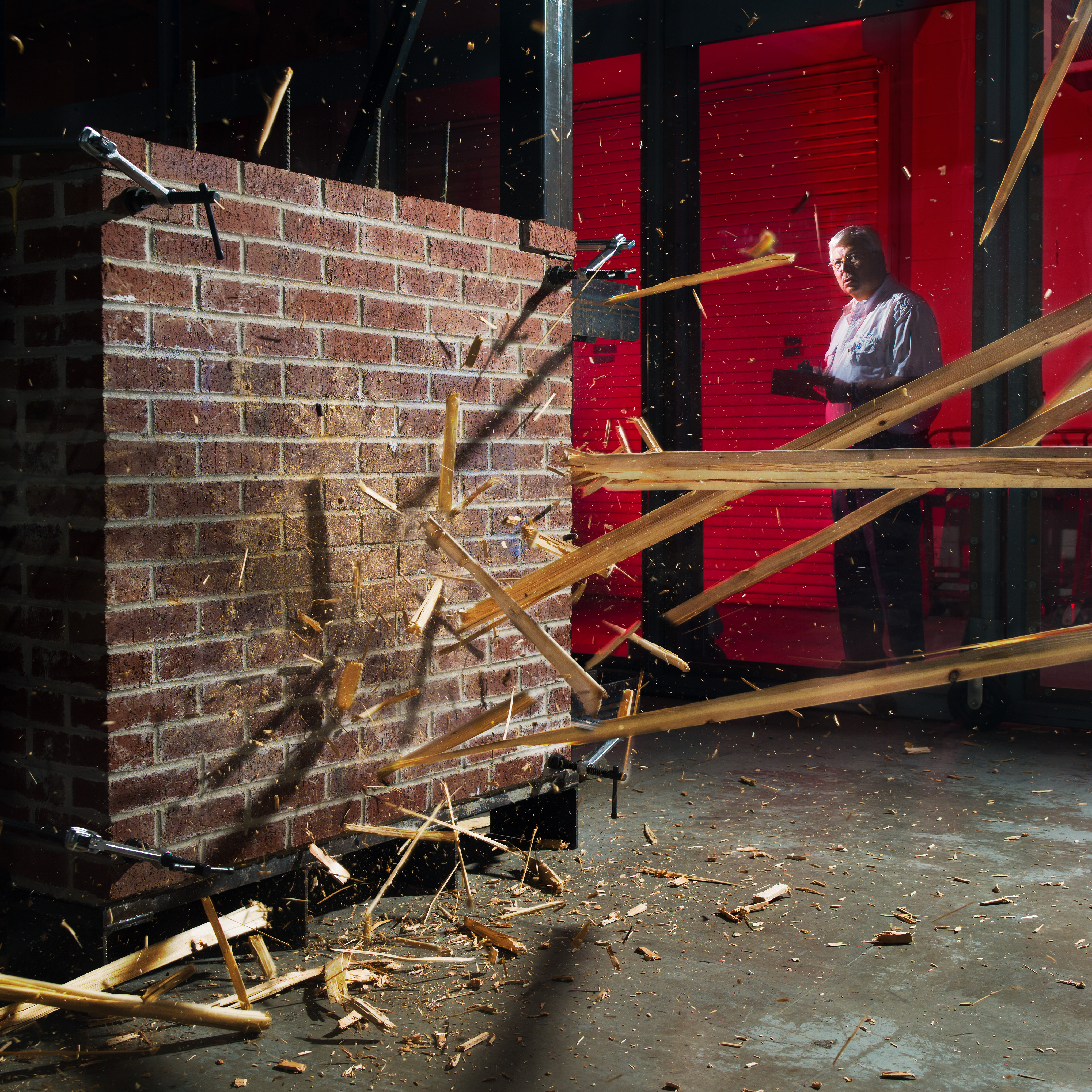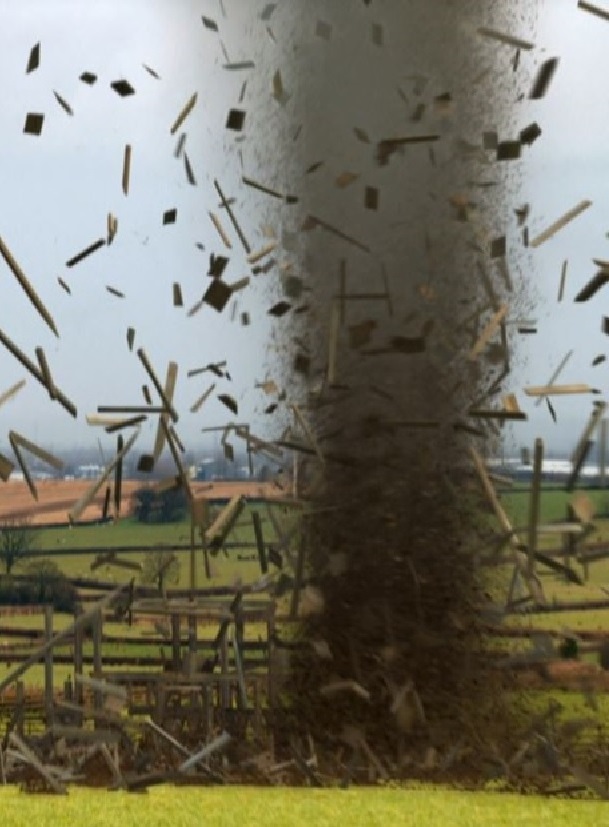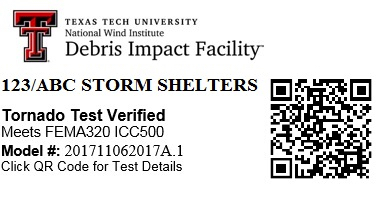NWI Debris Impact Facility
Texas Tech is no longer offering debris impact testing services for standards compliance. Both UL and Intertek offer testing of storm shelters and components.
1. Intertek: Anne Whitson, anne.whitson@intertek.com; 608-824-7415
2. UL: Rhonda Schotz, rhonda.schotz@ul.com; 847-664-8273
The National Storm Shelter Association (NSSA) Board is currently working through proposals with UL and Intertek to offer a testing package. this package will include compliance testing as well as labelling and listing, assuring fulle compliance with relevant standards. We should have more information in the coming months. Contact info@NSSA.cc.
The mission of the National Wind Institute (NWI) Debris Impact Facility (DIF) is intended to promote public safety and welfare and helps prevent deaths and lower property losses incurred due to extreme weather events and their effects.
The Debris Impact Test Facility is a twenty year internationally acclaimed test laboratory for its debris impact testing of storm shelters, residential/commercial doors and shelter/blast components. It has written test standards and is now venturing into research that can further study the effects of storms and other natural hazards.

DIF offers storm shelter, safe room, commercial and residential door, window, and other components testing, including the structural performance of exterior doors, windows, curtain walls, and skylights by uniform static air pressure testing using FM Global Approved TTU DIF Air Bladder Standard 1.1.2016. All testing is in accordance with FEMA 320 and 361 guidelines and ICC-500 standards, ASTM E1886, DOE-STD-1020-2002, and Miami Dade County Florida Building Code (Hurricane testing). Uniform static air pressure testing is done to determine the ability of elements of the building envelope to remain unbreached during severe windstorm event, including hurricanes or tornadoes.
The heart of the DIF is a pneumatic cannon capable of firing simulated projectiles propelled by high wind speeds during a tornado and/or hurricane. The cannon can launch different types of simulated wind-born debris in a controlled environment to provide valuable impact resistance data.

The cannon plays an important role in researching effective tornado shelters for use in homes and other structures. The cannon is used to develop standards for safe above ground shelters and continues to be in demand for testing new shelter materials and constructions.
The DIF has also been selected for Popular Science's "Most Awesome College Labs 2013" and as one of "PopSci's Most Awesome College Labs 2011".
Watch a video demonstrating the debris impact cannon in action. This video is an impressive, slow-motion real-life impact of a sample debris cannon missile.

The newest pure research effort is aerial mapping of storm damage using quadcopters and single-wing drones. This type and scale of mapping of storms immediately after storms is new research, never done before. The mapped debris paths and 3D imagery obtained in this research will provide information never before realized.
The research team from the National Wind Institute Debris Impact Facility can measure debris volume using drones, then develop an information-based model to determine the cost of cleanup. Awesome. Amazing. Incredible. Unbelievable. Spectacular.
REPORTS:
- Analysis of the Above-ground Shelter Door Failure April 27, 2014 Tornado, Mayflower, Arkansas
- Debris Impact Resistance Building Assemblies Submitted to NIST
- Guidance for Wind Resistant Residential Design, Construction & Mitigation
- Standard Test Method for Materials attached to Vertical or Near Vertical Surfaces and Their Resistance to Horizontally Propelled Freezer Ice Balls
- Standard Test Method for Structural Performance of Exterior Doors, Windows, Curtain Walls, and Skylights by Uniform Static Air Pressure Difference using Air Bladders
- Storm Reports by Larry Tanner
For Information on Debris Impact Testing:
Anna Thomas, Director of Operations, NWI
- Phone: (806) 742-3476
- Email: anna.e.thomas@ttu.edu
TTU NWI Debris Impact Facility Brochure
Frequently Asked Questions
Tested Shelters, Doors & Components:
Helpful Links:
Helpful Resources:
- Protocols DOE
- FEMA P-320 - Taking Shelter from the Storm: Building a Safe Room for Your Home or Small Business, Fourth Edition (2014)
- FEMA P-361 - Safe Rooms for Tornadoes and Hurricanes: Guidance for Community and Residential Safe Rooms, Third Edition (2015)
- ICC 500-2014: ICC/NSSA Standard for the Design and Construction of Storm Shelters
Debris Impact Videos:
National Wind Institute
-
Address
1009 Canton Ave., MS 3155 Lubbock, TX 79409-3155 -
Phone
National Wind Institute - 806.742.3476; Renewable Energy - 806.742.6284 -
Email
National Wind Institute - nwi@ttu.edu; Renewable Energy - windenergy@ttu.edu







